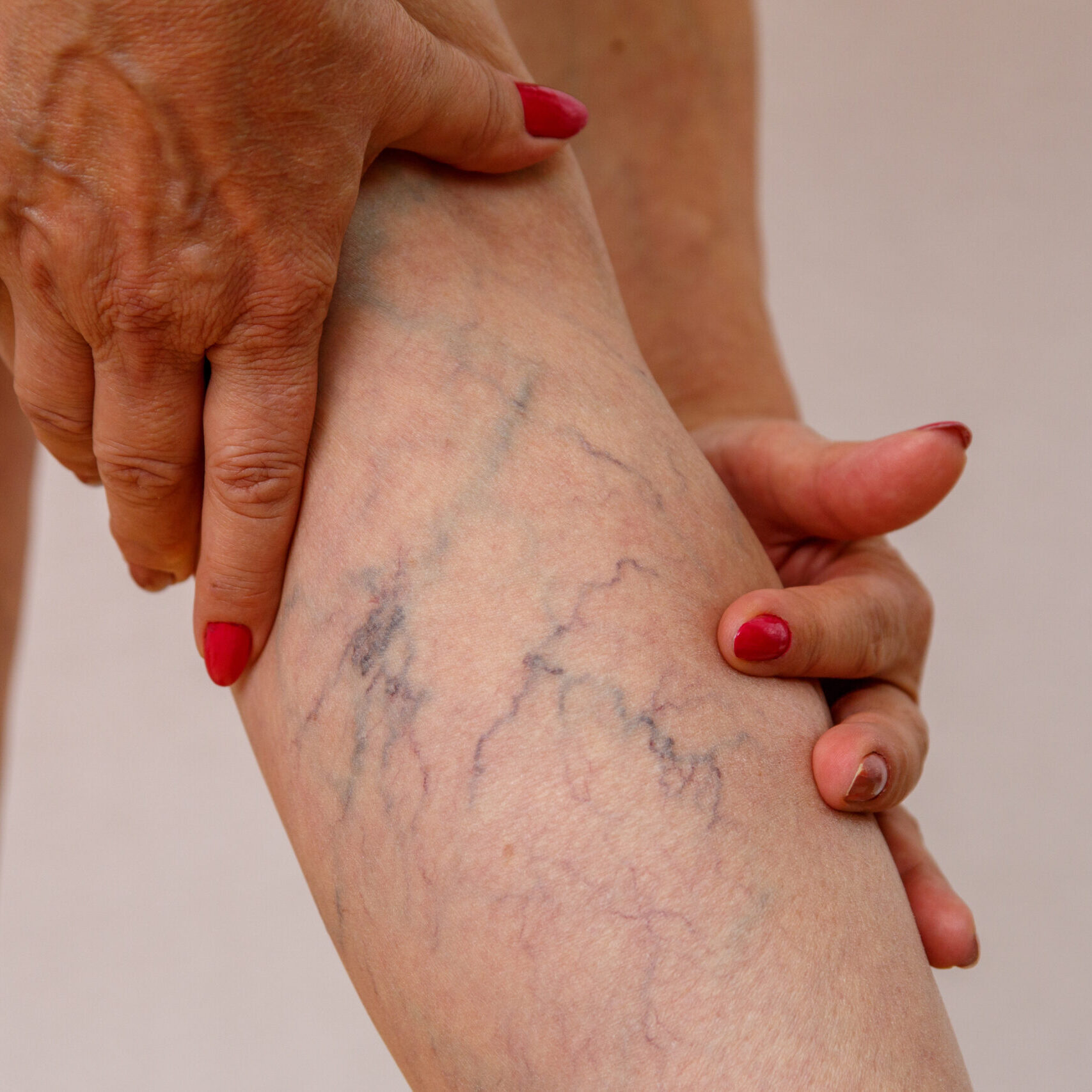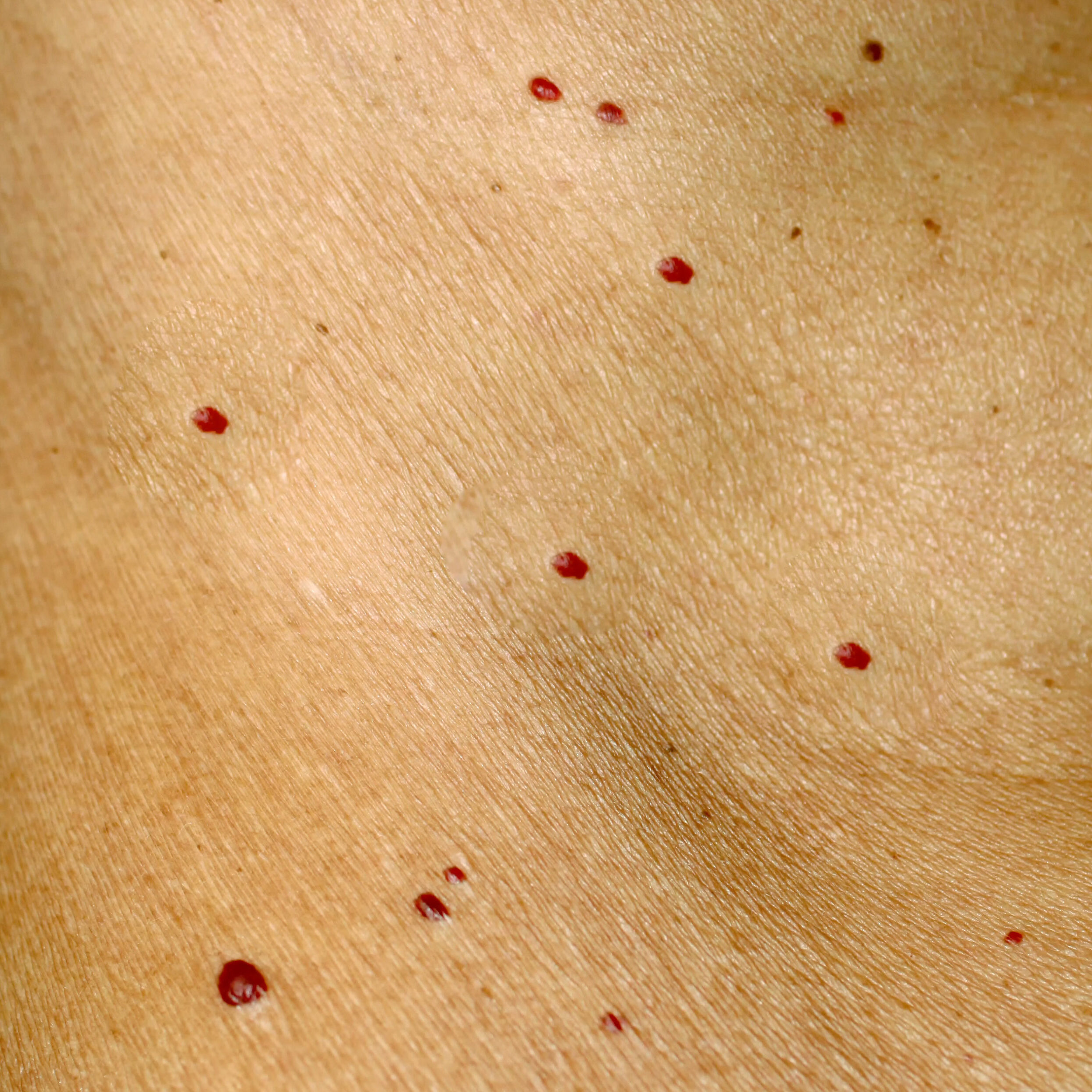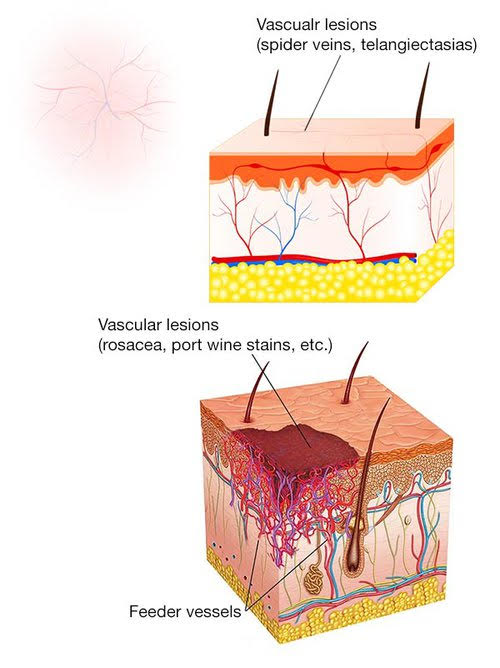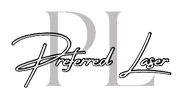What are vascular lesions?
Telangiectasias, often called spider veins, develop when small blood vessels near the surface of the skin become permanently widened. This happens because the vein walls are exposed to constant stretching, which affects how the valves inside function.
There are two main types:
Capillary – These are very fine, red or pink veins, usually less than 0.2 mm wide.
Venous – These appear bluer in color and are larger than 0.2 mm.
Spider veins can develop due to genetics or external factors. If someone has a genetic tendency, their vein walls may be weaker, which affects how well the veins and their valves function. Other contributing factors include:
Age – Veins naturally weaken over time.
Hormonal changes – Such as pregnancy, menopause, or birth control use.
Gender – Women are more prone to developing them.
Lifestyle – Prolonged standing, excessive sun exposure, or certain medical conditions can contribute.
Pregnancy, in particular, increases the risk because hormone levels rise and blood volume increases. This puts extra pressure on the veins, making them more likely to stretch out over time.

What about cherry angiomas?
Cherry angiomas are small, bright red spots made up of tiny blood vessels. Some people describe them as red moles. They are completely benign (non-cancerous) and tend to appear with age. While their exact cause isn’t fully understood, they are believed to be linked to genetics, aging, and possibly hormonal changes. Unlike spider veins, cherry angiomas do not result from weakened vein walls but rather from an overgrowth of blood vessels in the skin.

How does treatment work?
We use the GentleMax Pro 1064nm wavelength to effectively target the hemoglobin (blood) in the vessels. Upon firing of the laser beam, the blood will absorb the light energy, converting it to heat and causing controlled thermal damage. This is done through a process called Selective Photothermolysis, which is targeting the desired chromophore (blood) without damaging the surrounding tissue. This machine’s parameter versatility and dual-wavelengths is why it can provide the option for different treatments.
Benefits
Lesion is completely cleared or less visible
Improved skin tone
Precise and efficient
Gentle and well-tolerated treatment
All skin types eligible

FAQs
If your veins are too large to treat, your laser professional will recommend you see a dermatologist for other vascular treatment options, such as sclerotherapy. This is to minimize risk rush as risk of clotting, worsening the condition, and/or excessive heat buildup that can lead to burns, hyperpigmentation, or scarring.
The area will be cleaned and assessed, then your laser professional will have one hand bracing on the skin, sometimes spreading the skin for better visual clearance, and the other hand holding the laser handpiece. Upon firing of the laser, you will feel a cool burst of air followed by a surge of heat.
The chromophore for laser hair removal is melanin. The laser uses light energy which is then converted to heat that damages the active hair follicle. This is why it is important to stay out of the sun before treatments because the risk of the laser targeting active melanin in the skin over the melanin in the follicle becomes more relevant with sun exposure. The importance of no sun exposure after treatment is because if even more heat is applied after treatment, this can run a risk of hyperpigmentation, burns, and/or worsening irritation of any present side effects.
We recommend 6-8 consecutive sessions scheduled every 3-6 weeks for the face and 5-8 weeks for the body before entering maintenance. Appointments are then scheduled less frequently, with touch-ups needed approximately 2-6 times a year on average. It’s important to note that some individuals with hormonal imbalances may need more consecutive and frequent sessions before achieving desired results.
During each session, we focus on targeting hairs in the anagen phase, or the active growth phase. In this phase, the hair is fully anchored to the follicle and contains the highest levels of melanin, making it most responsive to treatment.
It's important to note that not all hairs are in the same phase at the same time. Our body’s hairs are in different stages of growth, namely anagen, catagen (the transitional phase), and telogen (the resting phase). Because these phases don't occur simultaneously, it takes time for each hair to move through its cycle. This is why multiple sessions are necessary to effectively target hairs in the anagen phase, which is when they’re most likely to respond to treatment.
With each session, as more hairs enter the anagen phase and are treated, you’ll notice any hair that does regrow will be finer and thinner, which is why occasional maintenance sessions are recommended to ensure long-term results and target any new growth cycles.
- Remove any skin care
products on the day of treatment. - AVOID THE SUN - The area to be treated should not be exposed to sun 4- 6 weeks prior to treatment. Treatment of tanned skin may cause blistering or possible hypopigmentation which may last for 3-6 months.
- Avoid exercise at least 1 hour prior to your appointment.
- Avoid using tanning creams, spray tans, or any type of temporary pigmented creams about a week prior to treatment and be sure to exfoliate any residual product at least 2 days prior to treatment.
- The heat from the laser pulses may be slightly uncomfortable during and immediately following treatment. Cold
gel packs/ice can be applied to reduce discomfort, and Tylenol is recommended for any pain, as needed. - If legs were treated: elevate your legs to decrease discomfort, especially when large areas are treated. Compression stockings may or may not be recommended by your laser professional.
- AVOID THE SUN completely after treatment to reduce hyperpigmentation. Use a broad-spectrum SPF 30 with UV A/B sunblock.
- Avoid any skin care until area is fully healed. You can then introduce a gentle cleanser and moisturizer if needed.
- Avoid strenuous exercise for 48 hours after treatment
- Wait at least 8 weeks before the next treatment as resolution of the vessels continues throughout this entire period. Your professional may have you wait even longer between treatments.
- Your individual vein may appear bruised or darker red following treatment. This discoloration will fade over the next
few weeks. If on the legs: brown discoloration may take several months to fade.
